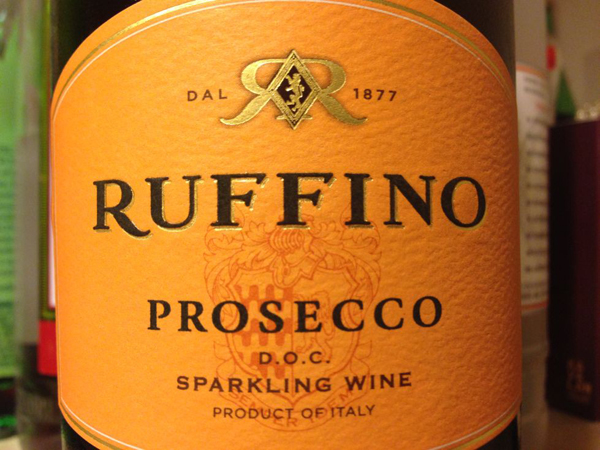
By Rick Riozza
A lot of the world’s sparkling wines are Champagne wannabes. But that’s not the case when it comes to Prosecco.
Traditionally Prosecco was made as a soft, somewhat sweet wine with just a little fizz, but today’s Proseccos are dry and very bubbly. Produced primarily from the Glera grape, in the Veneto region of Italy, around the city of Treviso about 15 miles north of Venice.
For you wine nerds, Prosecco is made using the Charmat method rather than the Champagne method—the French method of making sparkling wine. The Charmat method allows the wine to go through the second fermentation in pressurized tanks rather than in individual bottles. The shorter, tank fermentation is preferable for Prosecco because it preserves the freshness and the flavor of the grapes.
The steep slopes in the band of hills between Conegliano and Valdobbiadene in northeast Italy’s Veneto region have been Prosecco’s home for centuries. Thanks to its southern exposure, stony soils, and breeze from the Venetian bay, this is where the best Prosecco are made.
Venetians consider Prosecco an ideal apperitivo or ombrette (pick-me-up). It’s what you want when you’re in the mood for something completely different, fizz-wise. At its best, it’s all drink-me-now pleasing, with mineral notes, a savory flavor, and tight bubbles—it’s the summer’s promise.
Straw-colored Prosecco, with its overtones of citrus, melon, lemon, almonds, and honey, is a perfect summer wine. It is crisp and clean with small bubbles which pairs nicely with salads, pizza, white meat, seafood—especially calamari and crabmeat, and, even all but the heaviest pastas.
Most Prosecco is at its best when consumed within three years of its vintage, but the highest-quality Prosecco can be aged for up to seven years.
As with all well-made wines, one can expect to pay some bucks for the high-end stuff. We’re generally talking from $20 to $45, for that real special occasion or celebration. But no worries: Probably the best deal of the day for excellent Prosecco, at around $8 to $10, can almost certainly be found at your local supermarket: Ruffino Prosecco is my choice at that price range.
You’ve probably seen the familiar Ruffino label in most major supermarkets, usually on a bottle of Chianti or similar. Now they’re producing first rate Prosecco at a cost that’s right up our alley.
More than 130 years ago, founders Leopoldo and Ilario Ruffino were among the first in Tuscany to recognize that the best wines come from the best vineyards. They honor that philosophy today by meticulously choosing top vineyard sites, throughout Italy, while carefully managing the vines and the yields, and using non-interventionist practices in both the vineyards and in winemaking.
Ruffino has always embraced tradition and history in their relentless pursuit of the highest quality, while the winemakers also use modern cellar techniques.
 This Ruffino Prosecco is delicate and light, with smallish bubbles. It’s fragrant with aromas of apples, pears and citrus, accompanied by slight hints of hawthorn, wisteria and elder. On the palate, it’s crisp and clean, while hints of peaches and apples drive a pleasant aftertaste. Elegant and balanced with a nice, dry fruity finish.
This Ruffino Prosecco is delicate and light, with smallish bubbles. It’s fragrant with aromas of apples, pears and citrus, accompanied by slight hints of hawthorn, wisteria and elder. On the palate, it’s crisp and clean, while hints of peaches and apples drive a pleasant aftertaste. Elegant and balanced with a nice, dry fruity finish.
This wine is “extra dry,” meaning, it’s mildly sweet. It’s got everything going: it’s elegant, it’s fun, it’s refreshing, and as mentioned, the Ruffino goes with everything in town. At Thanksgiving at our house, the morning prep is always fueled with a few bottles of Prosecco to keep everyone happy, lively, and moving.
The Ruffino is simply a great weekday sparkler quaff in the desert, with only 11% alcohol.
And now, some words on the Bellini Cocktail: I know I’m “old school” when it comes to messing with traditional sparkling wine. But I know there are some great tasting cocktails out there—the Bellini being one of them. The Bellini was invented sometime in the thirties or forties by Giuseppe Cipriani, founder of Harry’s Bar in Venice, Italy. He named the drink “the Bellini” because its unique pink color reminded him of the toga of a saint in a painting by 15th-century Venetian artist Giovanni Bellini.
The drink started as a seasonal specialty at Harry’s Bar, a favorite haunt of Ernest Hemingway and the like. Later, it also became popular at the bar’s New York counterpart; after an entrepreneurial Frenchman set up a business to ship fresh white peach pureé to both locations, it was a year-round favorite.
Made with Prosecco instead of Champagne, it is nevertheless widely regarded as the best Champagne cocktail in the world.
When making a Bellini, everything (the glasses, Prosecco and the white peach purée) should be as cold as possible. The general rule is to use one part white peach purée to three parts Prosecco.
Use fresh or fresh-frozen white peach purée when you can; never use a food processor because it aerates the fruit. Some use a cheese shredder, shredding the peaches and using a strainer to collect the maximum of juice.
Add a bit of sugar or some simple syrup if the purée is too tart or a tad sour. And never use yellow peaches to make a Bellini. If you wish, add a touch of raspberry or cherry juice, which gives the drink that unique translucent pink hue. Adding peach schnapps really isn’t recommended, and is never used at Harry’s Bar. Cheers!
Rick is your somm-about-town and wine steward at Haggen in Rancho Mirage. He also hosts and conducts at various wine events & tastings. Contact winespectrum@aol.com












































